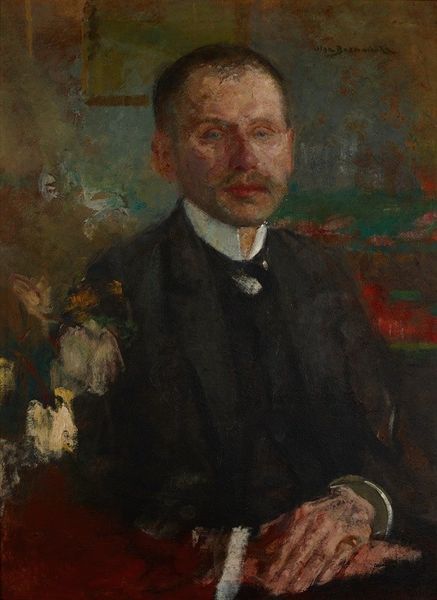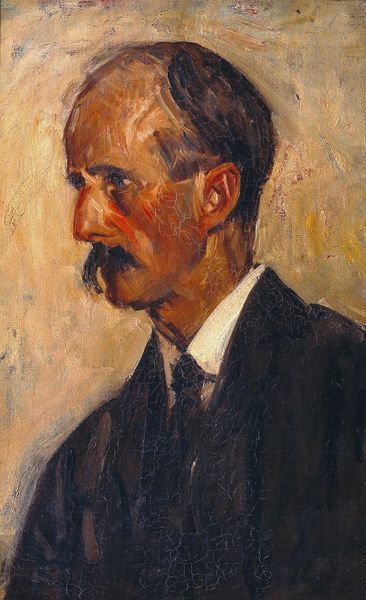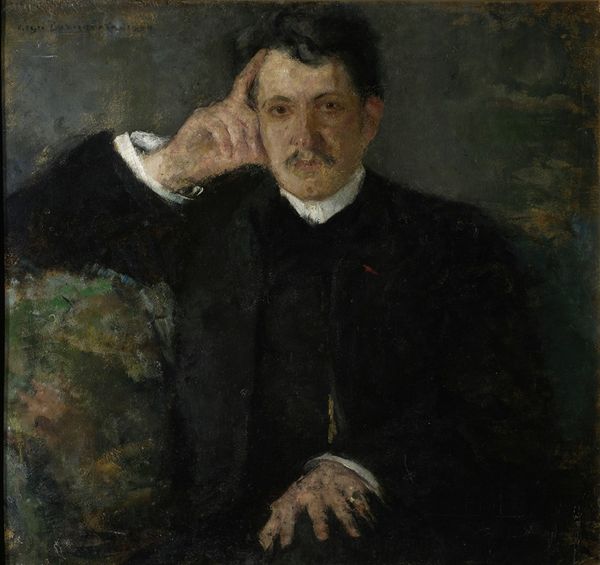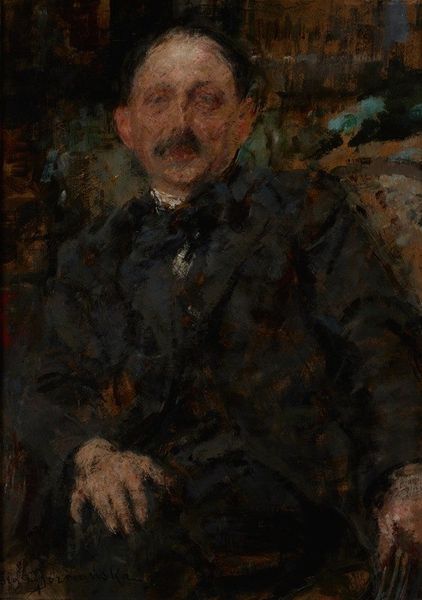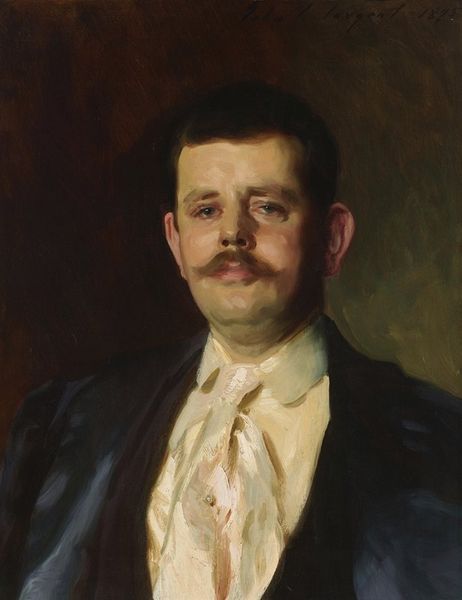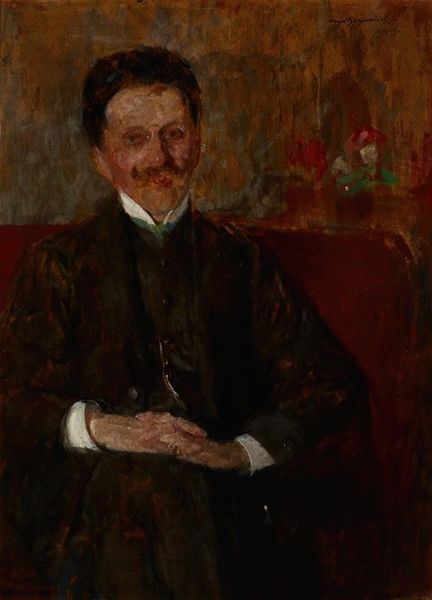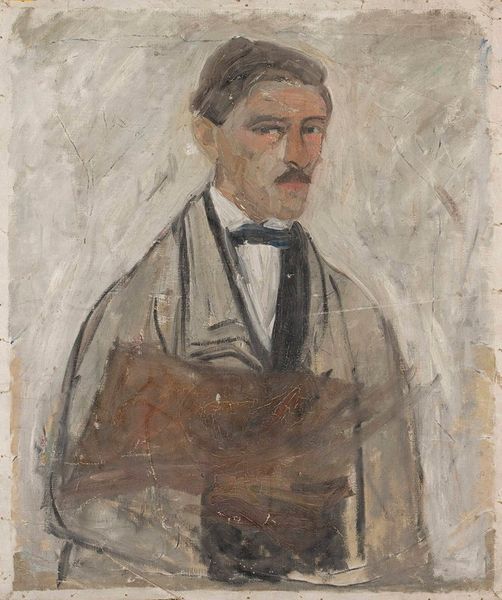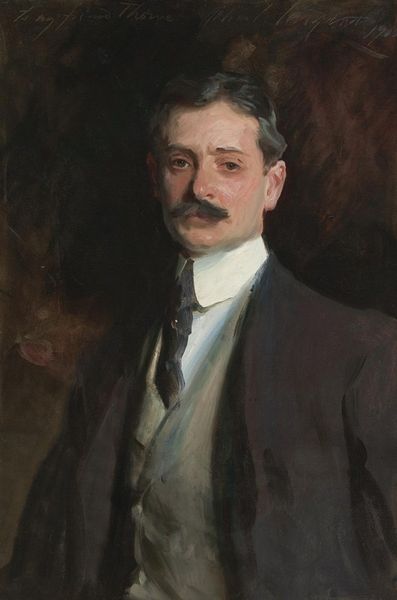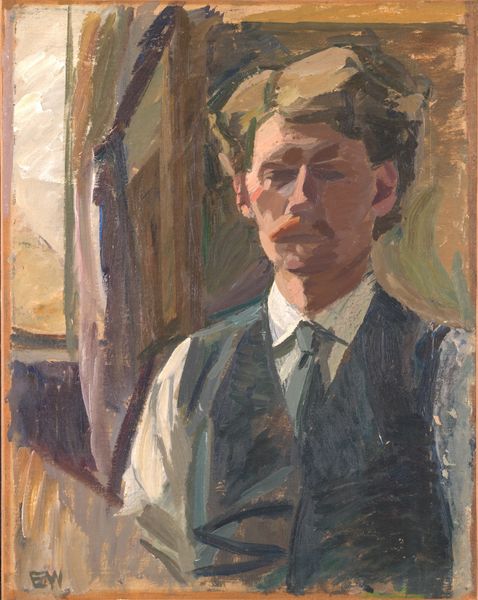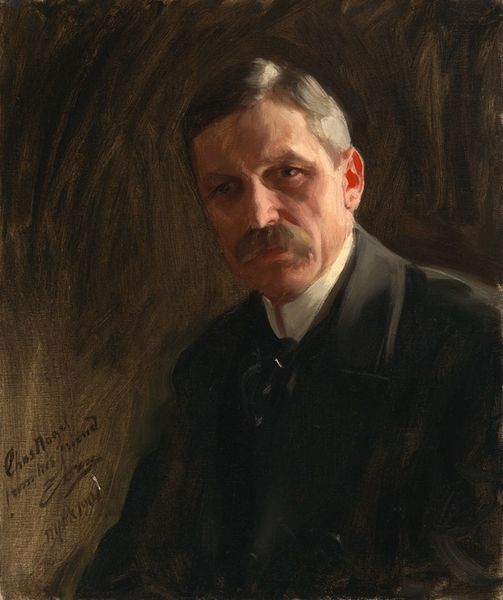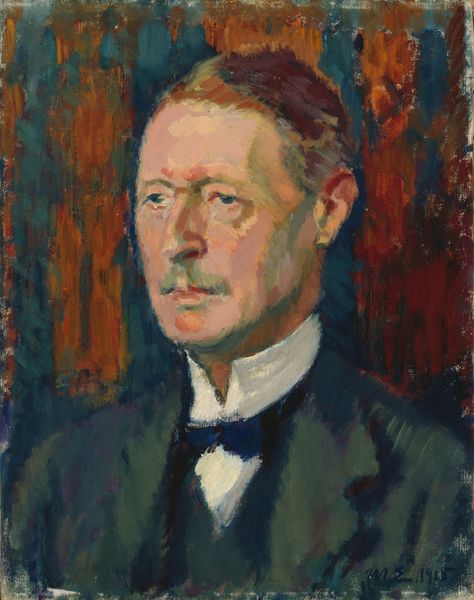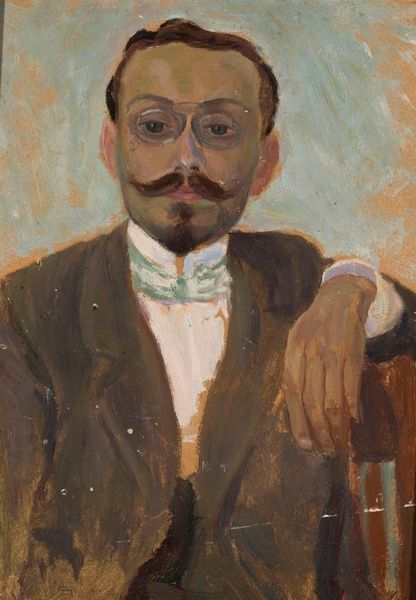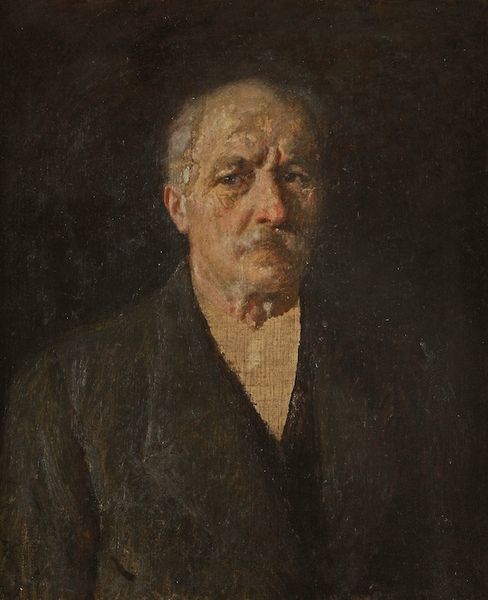
oil-paint
#
portrait
#
16_19th-century
#
impressionism
#
oil-paint
#
oil painting
#
realism
Copyright: Public Domain: Artvee
Editor: We're looking at Tina Blau's "Herrenbildnis" from 1882, rendered in oil paint. I'm immediately struck by the way the light catches the subject's face. How would you interpret the composition of this portrait? Curator: The composition operates on several levels. Firstly, observe how the subdued palette—primarily variations of grey and brown—forces attention onto the areas where Blau manipulates light and shadow. This chiaroscuro is not merely descriptive, but structurally integral to how the portrait's dimensionality is achieved. Secondly, the brushstrokes themselves become a focal point. Do you notice the varying textures? Editor: I do! Some strokes are blended seamlessly, creating smooth surfaces, while others are quite visible, particularly around the collar and hair. Curator: Precisely. These deliberate choices engage the viewer in a dynamic interplay between representation and abstraction. Consider the implied texture – how the paint suggests, rather than mimics, the tactile qualities of fabric or skin. Furthermore, the subject's gaze is directed slightly off-center, disrupting a sense of complete symmetry. What effect do you think this asymmetry has? Editor: It makes him seem more real, less like a posed figure. It's like catching a glimpse of him in a moment of thought. It seems like Blau balances realism and impressionism with his posture and his soft look Curator: Yes. So it is through the manipulation of light, texture, and form, that Blau elevates the work beyond a simple likeness, creating a study of character through purely formal means. This formal language conveys the essence and effect, not a reproduction. What an excellent dialogue. Editor: Absolutely. Thanks so much. I will consider formal qualities for every painting I analyse from now on.
Comments
No comments
Be the first to comment and join the conversation on the ultimate creative platform.
